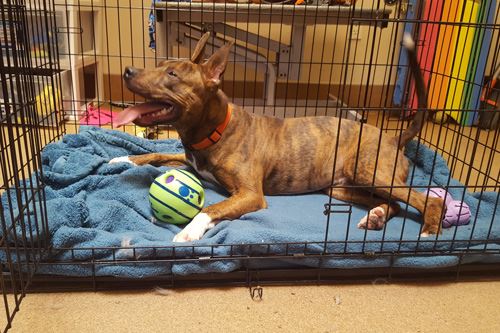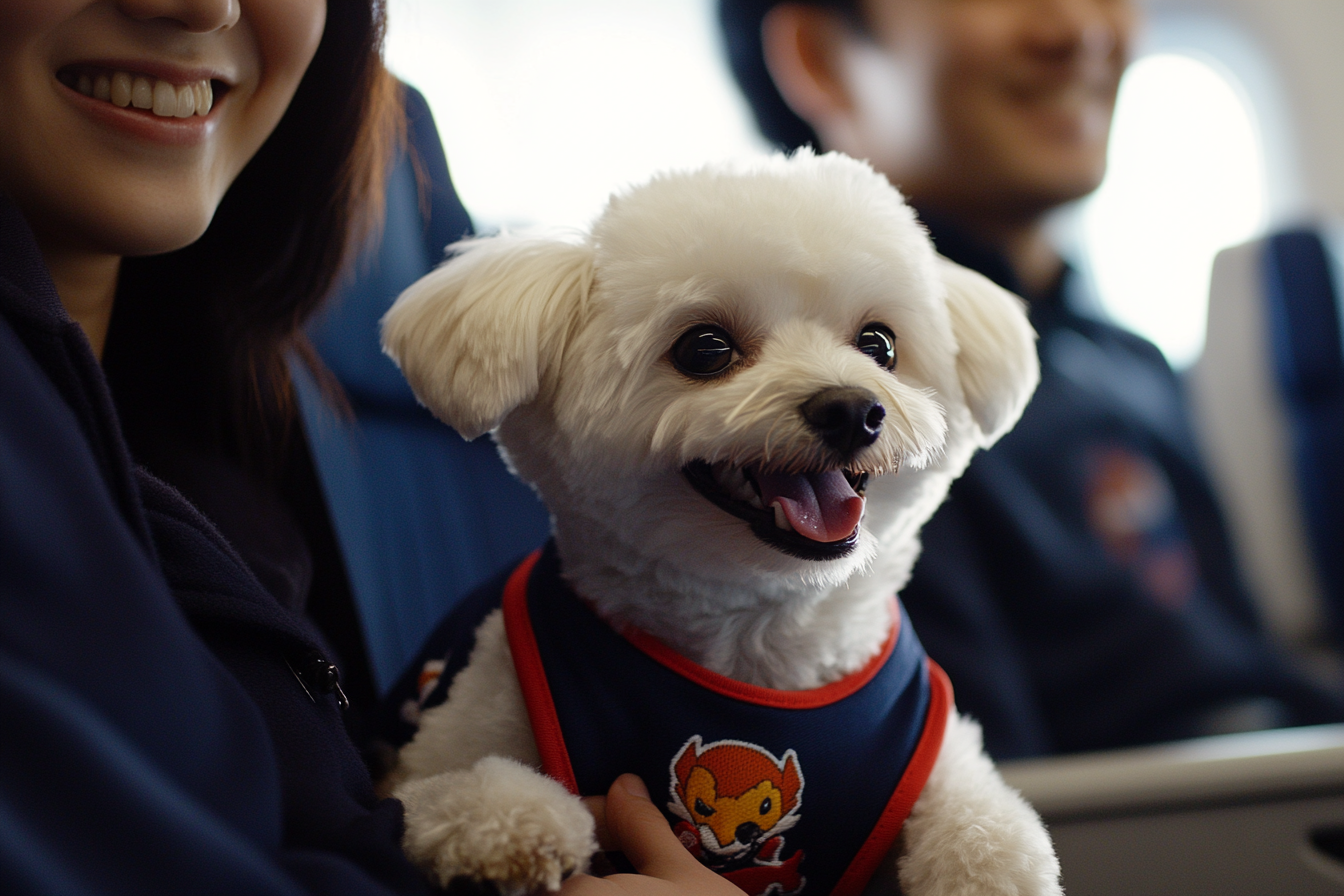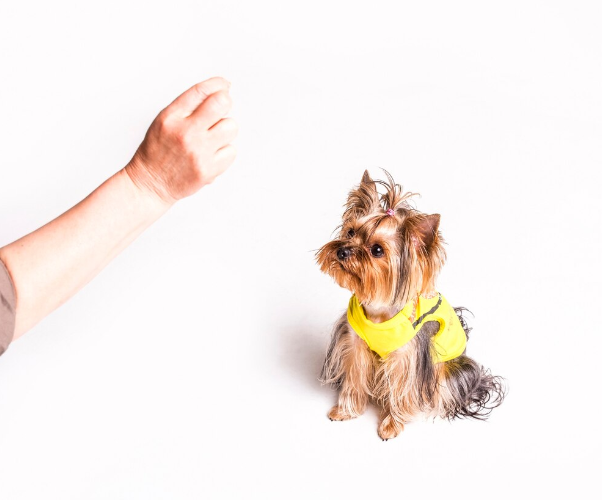
Many pet owners may have a difficult time when they get a new pup, and it does not have any obedience and social skills yet. Proper training is really important for the new furry family member, especially if it will become a service animal. A training approach that is really beneficial for both a handler and a dog, but tends to be disliked by some owners, is the so-called “crate-training”. For many owners, this kind of training may seem to be unfair or even cruel towards the dog and his/her needs for love and human contact.
In this article, we will let you know more about the crate-training process, why it is important, especially for service animals, and why you should not consider it an unethical training method.
What Is Crate-Training?
Crate training is the process of teaching your dog to accept a crate or a cage as a familiar and safe location.
Crate-Training in Relation to Evolution
It is controversial if dogs qualify as den animals. Unlike den animals like groundhogs, the den is not a constant living place for dogs. Hence, it would not be accurate to say that they are den animals. However, their ancestors - the wolves, were born in dens where their maternal parent took care of the whelps during the first weeks of their lives. This may be the reason why dogs can accept crates better compared to other animals.
What Are the Benefits of Crate-Training?
This type of training is recommended by many veterinarians and breeders. When introduced properly, crates can become an effective tool for the management of the dog’s behavior.
Since dogs are not likely to muddy the place where they sleep, pups learn to hold their bladder while they are in the crate. Hence, owners do not have to clean after them and worry about that their pup relieving itself in the crate.
The second and more serious reason for providing crate training is safety-related.
Since you never know what events may occur, you need to be ready to take your dog and to bring him/her outside your home as quickly as possible. If your dog is not cooperative, he/she may get injured or even lost during these events. If you want to ensure that your dog will be with you, and you can monitor him/her regardless of the circumstances, you may want to try crate training.
If you move to a new home, your dog may develop anxiety or stress due to the environmental changes. Crate-training may be very helpful for your furry friend to adapt to the new environment easier without the need to fight for private space. This factor is really important when it comes to dogs provided by rescue shelters, as they tend to be fearful and distrustful and need more time to adapt.
Not only changes in their surrounding but also fireworks, thunder, and any extreme loud noises, as well as the presence of certain people may lead to stress and anxiety.
If you have a guest with children or another dog, the crate will make your canine feel safe and secure until the visit is over.
Another important benefit of crate training is related to the dog’s behavior while on board. Since pets are required to stay in crates during flights, owners may want to ensure that they will behave properly. Moreover, instead of using sedatives (which is not recommended) to calm down your pet during a long flight, you can crate-train him/her as a tool for behavioral management in these kinds of situations.
Of course, we want to mention again, that service dogs are not considered pets, and different rules apply to them. Service animals are allowed to stay under the passenger’s seat, on the floor in front of the seat, or on the owners’ lap. All service animals are expected to be well-behaved at all times. The particular requirements may vary depending on the airlines.
When you have to drive a long time and take your dog with you, you certainly do not want him/her to distract the driver. When properly crate-trained, your fluffy friend will be able to stay calm and rest during the travel.
Here we come to another important benefit, especially for the dog itself - your canine will have his/her private place in your home where he/she will be able to rest and relax. This factor applies extremely to service animals, as they are working animals, and you need to secure an appropriate place in your home, where they can rest and recover.
Crate training can be really beneficial especially for service animals, as they have a place to rest and relax. Moreover, proper behavior is crucial for service dogs while in public, as they can be denied access to public accommodation if they are disruptive, sniff around, cause damages or relieve themselves in a public space.
You are already familiar with the benefits of crate training, and you may want to try it. But how should you conduct this training properly so that it will have a positive effect on your dog?
How to Conduct Crate-Training
Choose the right size of the crate
First, you need to choose the proper size of the crate. Some breeders recommend that you measure the length from the nose to the base of the tail of your dog and add a few inches (3-4 inch). The added inches are considered space to grow. If you are looking for a puppy crate, you may want to take their adult size as a reference point and use a dividing tool for adjustments of the inner space.
In general, your canine should feel comfortable when lying down, turning around, or standing in the crate. He/ she needs some extra space, but not too much. Both a too small and a too large crate should be avoided.
Where to Place the Crate
The position of the crate is very important. You may want to place it in a place in your home where your dog will have a good sight view, not too busy, but not isolated. Your presence is really important as it leads to a feeling of safety and security in your dog. Your dog should not feel punished and isolated, but also be able to have quality rest time. You also need to make sure that the place is not drafty, too hot, or too cold.
Crate Introduction - Treats and Toys, Your Favorite Training Tool!
Once you have chosen the proper size of the crate, you need to introduce the crate to your canine gradually. You can start to play with your dog and throw а treat or a favorite toy/object in the crate. Do not forget to open the crate’s door at the beginning and leave it this way during the “introduction” phase. Your canine is likely to go into the crate to get the treats.
Try to feed your dog in the crate by putting his/her food bowl inside so that your furry friend will need to get into the crate if he/she wants to eat. Another food-related tip that may help your canine to accept the crate quicker is to disperse your dog’s food on the crate’s floor. As we mentioned at the beginning of the article, dogs do not relieve themselves where they sleep. The same statement is also valid for the places where dogs eat. Furthermore, you can put in the crate toys with your canine’s favorite treats inside, so that he/she will have a joyful time while trying to reach the treats. In addition, pulling the treats outside the toy will stimulate your dog mentally and he/she will not get bored.
Close the Crate’s Door
Once you notice that your canine starts feeling more comfortable with the crate and go inside on his/her own, you can start closing the door. Of course, you need to begin with short periods of time, and you should not forget to put treats in the crate and “hide” them as much as possible. The exercise aims to create positive reinforcement and mental stimulation. You can start putting your canine in the crate for 10-15 minutes.
There are crates made of different materials like plastic, fabric, or wire, and even decorative crates to match your furniture. They also can be foldable or non-foldable.
You can put a blanket, a towel or any soft material on the crate’s floor so that your beloved friend will feel comfortable.
Gradually, your canine is likely to not only get used to the crate but also loves it and needs it as a safe place to relax.
Create a Proper Attitude
The right attitude is really important for the success of this training. If your dog associates the crate with rest time and relaxation, where he/she can enjoy his/her favorite treats, your paw friend will want to come back. Hence, it is important to not put your dog in the crate during play-time, when he/she is too energetic or over-exited and needs space to reduce the excessive amount of energy. You also may not want to put your canine in the crate when he/she is feeling anxious or stressed. Otherwise, your dog will start associating the negative feeling with the crate, and you do not want that.
What You Should Not Do
We highly recommend that you do not force your dog to go in the crate. Do not panic if your canine needs more time to get used to it.
Also, it is recommended that you do not put a collar, leash, tag or any accessories on your canine, as these may get caught in the crate and your dog may get injured or even worse- get strangled.
What You Should Not Forget
You need to remember to take your dog for a walk so that he/she can relieve him/herself and to spend play-time with him/her. Regular potty breaks and enough physical and mental challenges are crucial for the physical and mental well-being of our furry friends. Moreover, dogs need to have time to explore their environment- new scents, sounds, objects. Spending quality time with your dog is an essential part of the process of strengthening the bond between you and him/her.
What to Do if Your Dog Starts Whining While in the Crate
Most trainers advise ignoring this kind of behavior, as your canine will learn to repeat it every time he/she will go outside the crate. You need to reward him/her regularly, but remember to give your dog treats when he/he goes inside the crate. You should encourage proper behavior.
What to Do After Your Dog Starts Using the Crate on Its Own
You reached the moment when your canine already goes in the crate on his/her own, and you started to close the crate’s door.
You need to keep in mind that the time that your dog spends in the crate should increase gradually. First, you can keep him/her in the closed crate for a few minutes i.e. you can make a tee, wash the dishes, or engage in a home activity that does not require much time. Some trainers recommend that you use a device to record your dog’s actions while in the crate for your reference later. Do not forget to reward your dog when he/she behaves properly in the crate.
If you notice that he/she looks stressed, reduce the time your dog spends in the crate, or stop the training and wait until he/she relaxes. Then start over. Do not forget to use positive reinforcement methods to achieve the right attitude.
It is extremely important that you stay calm during the training process.
Dogs tend to feel the emotions of their owners and respond accordingly when they detect any behavioral changes.
We can affirm, that when provided properly, crate-training can be very beneficial for both an owner and a dog.












